- Home
- Randall Garrett
Anchorite Page 2
Anchorite Read online
Page 2
any great velocity.
* * * * *
St. Simon knew to a nicety that he could propel himself against a bed ofnails and broken glass at just the right velocity to be able to stophimself without so much as scratching his glove. And he could see thatthere was no ragged stuff on the spot he had selected. The slanting raysof the sun would have made them stand out in relief.
Now he was clinging to the surface of the mountain of rock like a bug onthe side of a cliff. On a nickel-iron asteroid, he could have walkedaround on the surface, using the magnetic soles of his vacuum suit. Butsilicate rock is notably lacking in response to that attractive force.No soul, maybe.
But directly and indirectly, that lack of response to magnetic forceswas the reason for St. Simon's crawling around on the surface of thatasteroid. Directly, because there was no other way he could move abouton a nonmetallic asteroid. Indirectly, because there was no way the bigspace tugs could get a grip on such an asteroid, either.
The nickel-iron brutes were a dead cinch to haul off to the smelters.All a space tug had to do was latch on to one of them with a magneticgrapple and start hauling. There was no such simple answer for thesilicate rocks.
The nickel-iron asteroids were necessary. They supplied the buildingmaterial and the major export of the Belt cities. They averaged aroundeighty to ninety per cent iron, anywhere from five to twenty per centnickel, and perhaps half a per cent cobalt, with smatterings ofphosphorous, sulfur, carbon, copper, and chromium. Necessary--but notsufficient.
The silicate rocks ran only about twenty-five per cent iron--in the formof nonmagnetic compounds. They averaged eighteen per cent silicon,fourteen per cent magnesium, between one and one point five per centeach of aluminum, nickel, and calcium, and good-sized dollops of sodium,chromium, phosphorous, manganese, cobalt, potassium, and titanium.
But more important than these, as far as the immediate needs of the Beltcities were concerned, was a big, whopping thirty-six per cent oxygen.In the Belt cities, they had soon learned that, physically speaking, thestuff of life was _not_ bread. And no matter how carefully oxygen isconserved, no process is one hundred per cent efficient. There will beleakage into space, and that which is lost must be replaced.
There is plenty of oxygen locked up in those silicates; the problem istowing them to the processing plants where the stuff can be extracted.
Captain St. Simon's job was simple. All he had to do was sink an anchorinto the asteroid so that the space tugs could get a grip on it. Once hehad done that, the rest of the job was up to the tug crew.
He crawled across the face of the floating mountain. At the spot wherethe North Pole was, he braced himself and then took a quick look aroundat the _Nancy Bell_. She wasn't moving very fast, he had plenty of time.He took a steel piton out of his tool pack, transferred it to his lefthand, and took out a hammer. Then, working carefully, he hammered thepiton into a narrow cleft in the rock. Three more of the steel spikeswere hammered into the surface, forming a rough quadrilateral around thePole.
"That looks good enough to me, Jules," he said when he had finished."Now that we have our little anchors, we can put the monster in."
Then he grabbed his safety line, and pulled himself back to the _NancyBell_.
* * * * *
The small craft had floated away from the asteroid a little, but notmuch. He repositioned it after he got the rocket drill out of thestorage compartment.
"Make way for the stovepipe!" he said as he pushed the drill ahead ofhim, out the door. This time, he pulled himself back to his drillingsite by means of a cable which he had attached to one of the pitons.
The setting up of the drill didn't take much time, but it was done witha great deal of care. He set the four-foot tube in the center of thequadrilateral formed by the pitons and braced it in position byattaching lines to the eyes on a detachable collar that encircled thedrill. Once the drill started working, it wouldn't need bracing, butuntil it did, it had to be held down.
All the time he worked, he kept his eyes on his lines and on his ship.The planetoid was turning under him, which made the ship appear to becircling slowly around his worksite. He had to make sure that his linesdidn't get tangled or twisted while he was working.
As he set up the bracing on the six-inch diameter drill, he sang a songthat Kipling might have been startled to recognize:
_"To the tables down at Mory's, To the place where Louie dwells, Where it's always double drill and no canteen, Sit the Whiffenpoofs assembled, With their glasses raised on high, And they'll get a swig in Hell from Gunga Din."_
When the drill was firmly based on the surface of the planetoid, St.Simon hauled his way back to his ship along his safety line. Inside, hesat down in the control chair and backed well away from the slowlyspinning hunk of rock. Now there was only one thin pair of wiresstretching between his ship and the drill on the asteroid.
When he was a good fifty meters away, he took one last look to make sureeverything was as it should be.
"Stand by for a broadside!"
"Standing by, sir!"
"You may fire when ready, Gridley!"
"Aye, sir! Rockets away!" His forefinger descended on a button whichsent a pulse of current through the pair of wires that trailed out theopen door to the drill fifty meters away.
A flare of light appeared on the top of the drill. Almost immediately,it developed into a tongue of rocket flame. Then a glow appeared at thebase of the drill and flame began to billow out from beneath the tube.The drill began to sink into the surface, and the planetoid began tomove ever so slowly.
The drill was essentially a pair of opposed rockets. The upper one,which tried to push the drill into the surface of the planetoid,developed nearly forty per cent more thrust than the lower one. Thus,the lower one, which was trying to push the drill _off_ the rock, wasoutmatched. It had to back up, if possible. And it was certainlypossible; the exhaust flame of the lower rocket easily burrowed a holethat the rocket could back into, while the silicate rock boiled andvaporized in order to get out of the way.
Soon there was no sign of the drill body itself. There was only a smallvolcano, spewing up gas and liquid from a hole in the rock. On thesurface of a good-sized planet, the drill would have built up a littlevolcanic cone around the lip of the hole, but building a cone like thatrequires enough gravity to pull the hot matter back to the edge of thehole.
The fireworks didn't last long. The drill wasn't built to go in toodeep. A drill of that type could be built which would burrow its wayright through a small planetoid, but that was hardly necessary forplanting an anchor. Ten meters was quite enough.
Now came the hard work.
On the outside of the _Nancy Bell_, locked into place, was aspecially-treated nickel-steel eye-bolt--thirty feet long and eightinches in diameter. There had been ten of them, just as there had beenten drills in the storage locker. Now the last drill had been used, andthere was but one eye-bolt left. The _Nancy Bell_ would have to go backfor more supplies after this job.
The anchor bolts had a mass of four metric tons each. Maneuvering themaround, even when they were practically weightless, was no easy job.
St. Simon again matched the velocity of the _Nancy Bell_ with that ofthe planetoid, which had been accelerated by the drill's action. Hepositioned the ship above the hole which had been drilled into the hugerock. Not directly above it--rocket drills had been known to show spurtsof life after they were supposed to be dead. St. Simon had timed thedrill, and it had apparently behaved as it should, but there was no needto take chances.
"Fire brigade, stand by!"
"Fire brigade standing by, sir!"
A nozzle came out of the nose of the _Nancy Bell_ and peeped over therim of the freshly-drilled hole.
"Ready! Aim! Squirt!"
A jet of kerosene-like fluosilicone oil shot down the shaft. When it hadfinished its work, there was little possibility that anything couldhappen at the bottom. Any un
burned rocket fuel would have a hard timecatching fire with that stuff soaking into it.
"Ready to lower the boom, Mr. Christian!" bellowed St. Simon.
"Aye, sir! Ready, sir!"
"Lower away!"
His fingers played rapidly over the control board.
* * * * *
Outside the ship, the lower end of the great eye-bolt was released fromits clamp, and a small piston gave it a little shove. In a long, slow,graceful arc, it swung away from the hull, swiveling around the pivotclamp that held the eye. The braking effect of the pivot clamp wasprecisely set to stop the eye-bolt when it was at right angles to thehull. Moving carefully, St. Simon maneuvered the ship until the far endof the bolt was directly over the shaft. Then he nudged the _Nancy Bell_sideways, pushing the bolt down into the planetoid. It grated a coupleof times, but between the power of the ship and the mass of theplanetoid, there was enough pressure to push it past

 Despoilers of the Golden Empire
Despoilers of the Golden Empire The Highest Treason
The Highest Treason Brain Twister
Brain Twister The Judas Valley
The Judas Valley The Impossibles
The Impossibles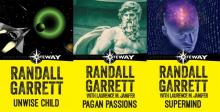 Pagan Passions
Pagan Passions Quest of the Golden Ape
Quest of the Golden Ape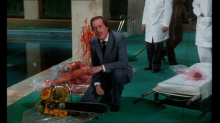 Psichopath
Psichopath By Proxy
By Proxy Damned If You Don't
Damned If You Don't Anchorite
Anchorite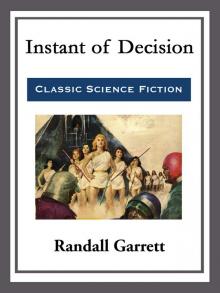 Instant of Decision
Instant of Decision The Bramble Bush
The Bramble Bush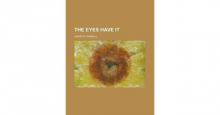 The Eyes Have It
The Eyes Have It Dead Giveaway
Dead Giveaway ...After a Few Words...
...After a Few Words... Black Eyes and the Daily Grind
Black Eyes and the Daily Grind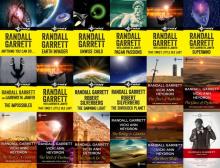 That Sweet Little Old Lady
That Sweet Little Old Lady With No Strings Attached
With No Strings Attached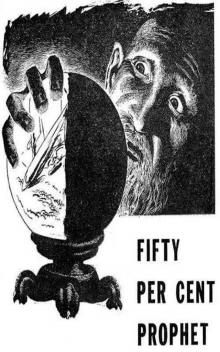 Fifty Per Cent Prophet
Fifty Per Cent Prophet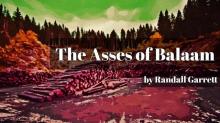 The Asses of Balaam
The Asses of Balaam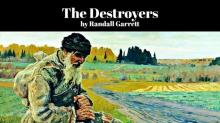 The Destroyers
The Destroyers But, I Don't Think
But, I Don't Think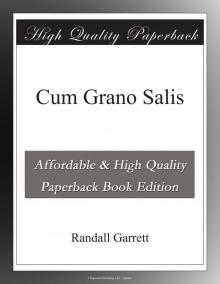 Cum Grano Salis
Cum Grano Salis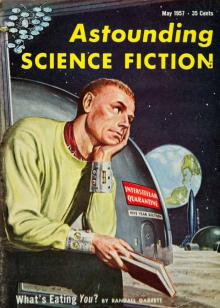 In Case of Fire
In Case of Fire Hanging by a Thread
Hanging by a Thread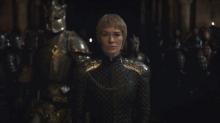 Heist Job on Thizar
Heist Job on Thizar A World by the Tale
A World by the Tale Nor Iron Bars a Cage....
Nor Iron Bars a Cage.... Suite Mentale
Suite Mentale The Man Who Hated Mars
The Man Who Hated Mars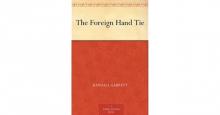 The Foreign Hand Tie
The Foreign Hand Tie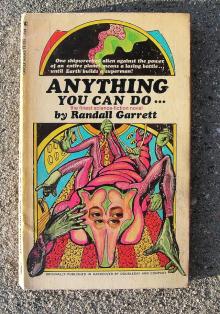 Anything You Can Do ...
Anything You Can Do ... Thin Edge
Thin Edge ...Or Your Money Back
...Or Your Money Back Viewpoint
Viewpoint Hail to the Chief
Hail to the Chief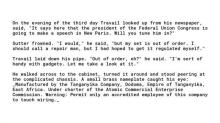 Made in Tanganyika
Made in Tanganyika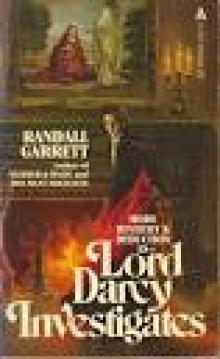 Lord Darcy Investigates
Lord Darcy Investigates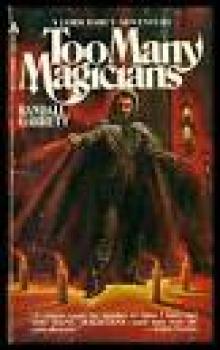 Too Many Magicians
Too Many Magicians Unwise Child
Unwise Child A Spaceship Named McGuire
A Spaceship Named McGuire The Bronze of Eddarta
The Bronze of Eddarta The Randall Garrett Megapack
The Randall Garrett Megapack Return to Eddarta
Return to Eddarta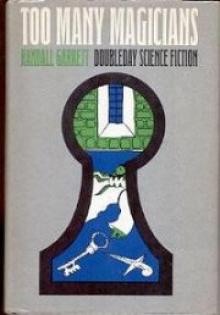 Too Many Magicians (lord darcy)
Too Many Magicians (lord darcy) The Well of Darkness
The Well of Darkness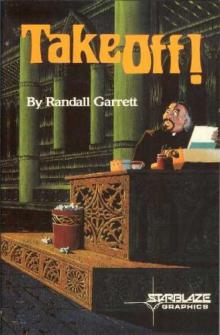 Takeoff!
Takeoff!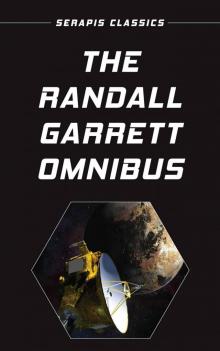 The Randall Garrett Omnibus
The Randall Garrett Omnibus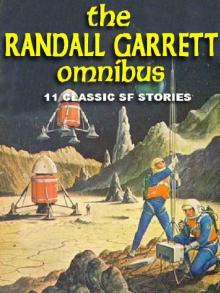 The Randall Garrett Omnibus: Eleven SF Classics
The Randall Garrett Omnibus: Eleven SF Classics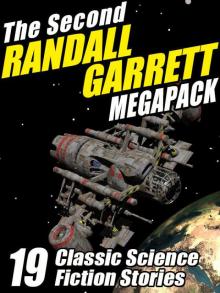 The Second Randall Garrett Megapack
The Second Randall Garrett Megapack The River Wall
The River Wall The Glass of Dyskornis
The Glass of Dyskornis The Search for Kä
The Search for Kä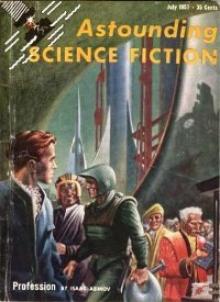 The Best Policy
The Best Policy